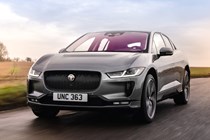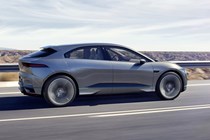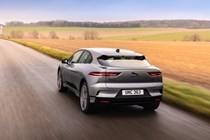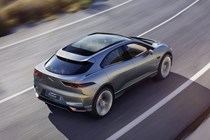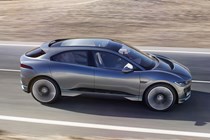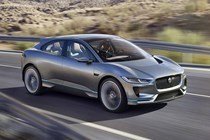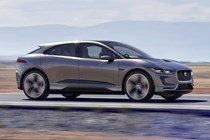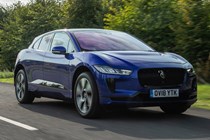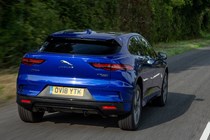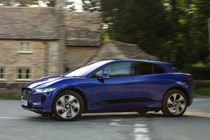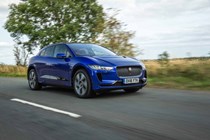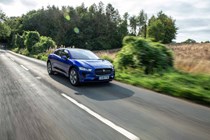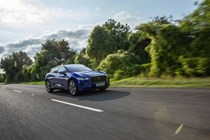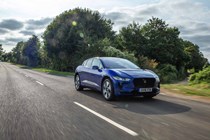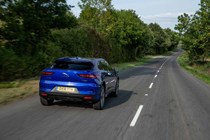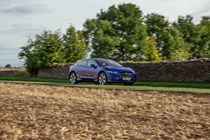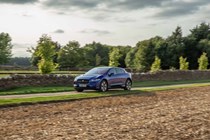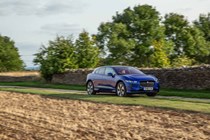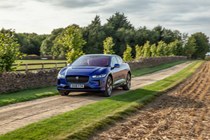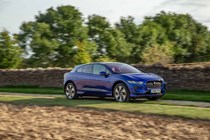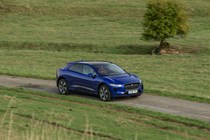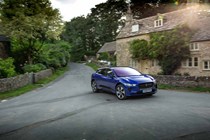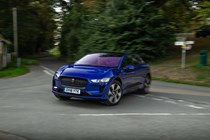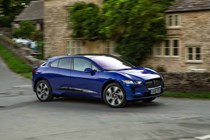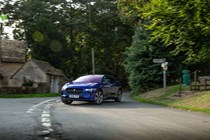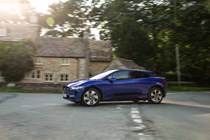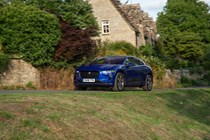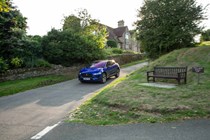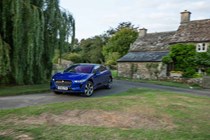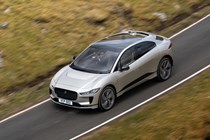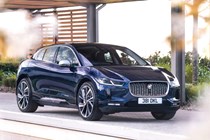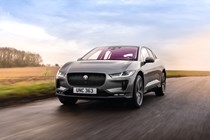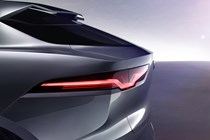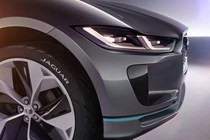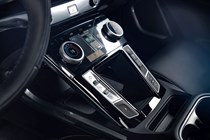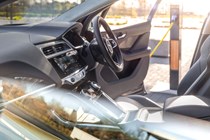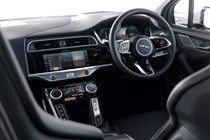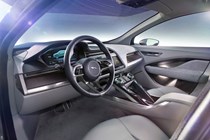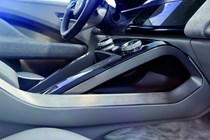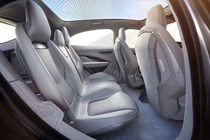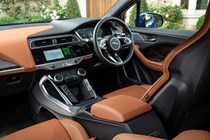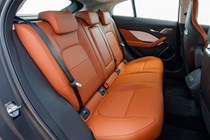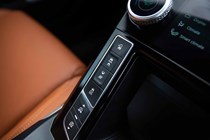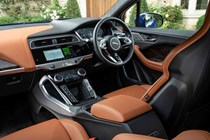Jaguar I-Pace SUV (2018-2025) running costs and reliability

Miles per pound (mpp) ⓘ
| Electric motors, home charging | 5.3 - 8.2 mpp |
|---|---|
| Electric motors, public charging | 2.9 - 4.4 mpp |
Fuel economy ⓘ
| Electric motors | 1.8 - 2.8 miles/kWh |
|---|
- Claimed 292-mile range
- Can cost very little to run
- Reliability issues do crop up
How much does it cost to run?
The precise cost of running an electric car is quite nuanced because there are so many factors to consider. It can be seriously cheap to run using a home charger – especially if you sign up to a cheaper EV electricity tariff. Thus equipped, you could fully recharge a Jaguar I-Pace’s 90kWh overnight for around £10-15 – according to Jaguar, doing so takes around 13 hours using a typical 7kW home wallbox charger.
Of course, if you don’t have access to cheap electricity, or can only top up on public chargers, the picture changes drastically. Using rapid chargers in particular can be quite expensive, potentially more so than filling up with petrol or diesel.
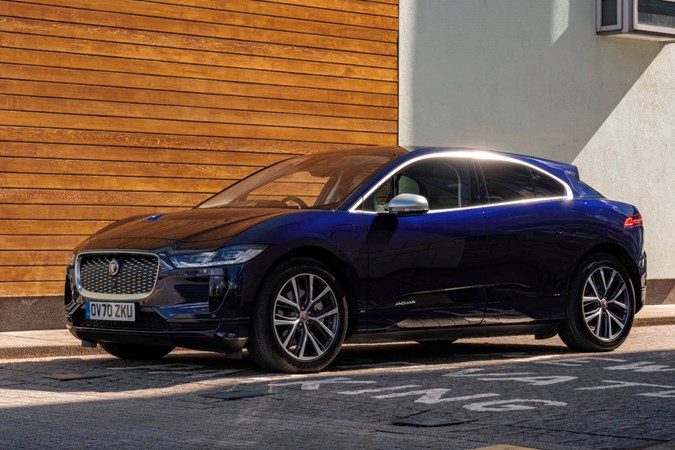
The I-Pace’s miles-per-pound figure of 2.9 – 8.2 is pretty good for a car with its level of performance. As are the tax savings company car drivers can make – the I-Pace attracts a 0% rating for Benefit in Kind (BIK).
Range and charging
According to the official WLTP figures, the Jaguar I-Pace is capable of 292 miles of range. But dig deeper into the numbers and it turns out the figure can be as low as 260 miles, depending on which model you’re looking at. But even the higher figure is a bit low these days. There are plenty of electric SUVs that can go more than 300 miles on a charge, such as the Genesis GV60 and Kia EV9. And there are a few electric saloons that can pass the 400-mile mark.
During a test drive that took in urban driving, motorways and a long stint on some very challenging and twisty roads driven with a good dose of enthusiasm, we reduced 248 miles of predicted range to 93 miles in 93 miles of driving. On longer runs, we typically saw that every 10 miles of driving reduced the range by 13 miles. Which is an acceptable performance.
Using a 50kW DC public charge point – the kind typically found at motorway services and public car parks – requires 85 minutes to take the I-Pace’s 90kWh battery pack from 0 to 80% capacity. Top it up with a 100kW-plus DC rapid chargers and the picture changes – using one of these will add up to 78 miles during a 15-minute session.

Most electric car owners recharge their vehicles overnight using a dedicated wallbox: a 11kW domestic wallbox can add 33 miles of range per hour. A full charge will take just over eight and a half hours. Drivers using a 7kW domestic charger will get up to 22 miles of charge per hour, with a full charge taking nearly 13 hours.
Servicing and maintenance
Being a premium brand, Jaguar’s servicing charges aren’t exactly cheap. However, you can take out a fixed price service plan. There are several available for both new and approved-used cars up to 10 years old.
The battery is covered by an eight-year warranty, and the I-Pace requires a service every two years or 21,000 miles to remain covered. The warranty on the rest of car lasts three years and there’s no mileage limit. The Genesis GV60 comes with a five-year warranty, making Jaguar’s coverage look a bit stingy.
Reliability
- I-Pace uses bespoke tech
- Build quality generally good
- But owners report reliability issues
Jaguar’s reputation for reliability isn’t great, to put it mildly. Our owner reviews show the I-Pace is prone to a litany of problems, particularly with the charging system. But that doesn’t stop many owners loving their cars. If you’re buying a used I-Pace, check the service history to see what work has been carried out under warranty, and how long it is since any issues arose.
Reliability woes are perhaps to be expected, considering the I-Pace was a completely bespoke design that used very little tech shared with other Jaguar models. Four recalls have been issued over the years affecting cars built up to 2023. Again, check the service history of a used I-Pace and/or contact a dealer to find it any rectification work has been carried out. Outstanding recalls are listed on the MOT certificate of any car that’s more than three years old.
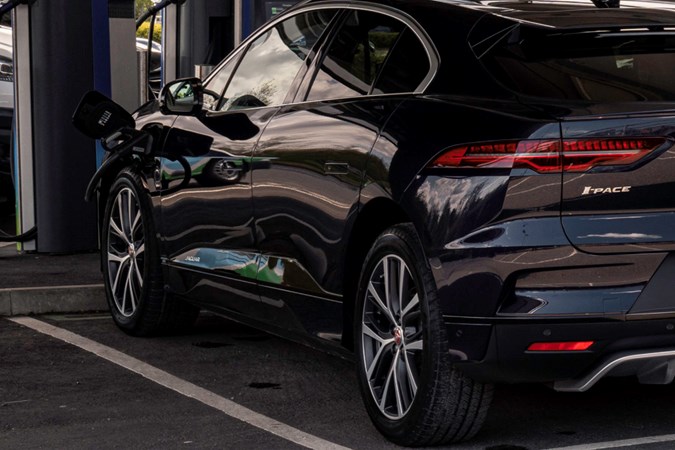
Ongoing running costs
| Road tax | £620 |
|---|---|
| Insurance group | 47 - 50 |
Get an insurance quote with

|
|


